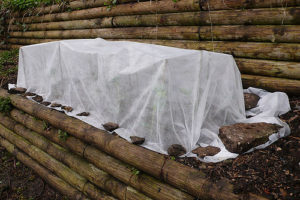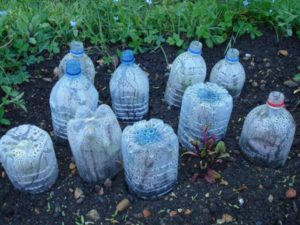How Do I Protect My Garden From Frost?
go.ncsu.edu/readext?687438
en Español / em Português
El inglés es el idioma de control de esta página. En la medida en que haya algún conflicto entre la traducción al inglés y la traducción, el inglés prevalece.
Al hacer clic en el enlace de traducción se activa un servicio de traducción gratuito para convertir la página al español. Al igual que con cualquier traducción por Internet, la conversión no es sensible al contexto y puede que no traduzca el texto en su significado original. NC State Extension no garantiza la exactitud del texto traducido. Por favor, tenga en cuenta que algunas aplicaciones y/o servicios pueden no funcionar como se espera cuando se traducen.
Português
Inglês é o idioma de controle desta página. Na medida que haja algum conflito entre o texto original em Inglês e a tradução, o Inglês prevalece.
Ao clicar no link de tradução, um serviço gratuito de tradução será ativado para converter a página para o Português. Como em qualquer tradução pela internet, a conversão não é sensivel ao contexto e pode não ocorrer a tradução para o significado orginal. O serviço de Extensão da Carolina do Norte (NC State Extension) não garante a exatidão do texto traduzido. Por favor, observe que algumas funções ou serviços podem não funcionar como esperado após a tradução.
English
English is the controlling language of this page. To the extent there is any conflict between the English text and the translation, English controls.
Clicking on the translation link activates a free translation service to convert the page to Spanish. As with any Internet translation, the conversion is not context-sensitive and may not translate the text to its original meaning. NC State Extension does not guarantee the accuracy of the translated text. Please note that some applications and/or services may not function as expected when translated.
Collapse ▲How do I protect my garden from frost?
We are due for some cold nights coming up in WNC and many people are asking what they should do to ensure their plants make it through this (hopefully) last cold snap.
Freeze sensitive plants are tomatoes, squash, begonias, geraniums, cucumbers, eggplant, musk melon, okra, peppers, pumpkins, squash, sweet corn, sweet potato, and tomatoes.
Semi-hardy vegetables are those which can survive repeated light frosts in the 30–32˚F range. These include beets, cabbage, cauliflower, celery, collards, green onions, potatoes, leaf lettuce, mustard, parsnips, radishes, spinach, and swiss chard.
Hardy vegetables such as broccoli, garden peas, spinach, cabbage, and carrots tolerate temperatures down to 28° and lower.
Quick Tips for Protecting Plants
- Water plants prior to freezing temperatures
- Trap heat by draping the plant with a frost cloth or sheet NOT plastic tarp. Make sure covers extend all the way down to the ground and are securely held down by bricks or staples.
- Mulch roots to minimize temperature fluctuation.
- Plants in containers should be brought into a garage or other enclosed structure for the night.
- Open blossoms and blossom buds showing color are more sensitive to cold than other plant parts.
- Smaller plants such as strawberries or seedlings can be covered with a thick layer of dry leaves or pine straw.
- Plants listed as semi-hardy should be covered when temps fall below 30. Crops listed as hardy should be covered when temps are predicted to fall below 25.
- Don’t give up on cold injured landscape plants. Even if the entire top is frozen, some cold-sensitive woody plants will recover by sprouting from the base or roots.
Exactly What Is a Hard Freeze?
The National Weather Service issues a hard freeze warning when “widespread temperatures below 28° are expected during the growing season”. This differs from a freeze warning, which is issued when temperatures below freezing are expected during the growing season. These plants are not likely to be seriously damaged this weekend, unless they have recently been transplanted out of a greenhouse without first being hardened off (gradual exposed to cooler temperatures).
Not sure which vegetable crops are considered hardy? Check the list in this NC State Extension fact sheet.
Learn more about the USDA Plant Hardiness Zone Map and lookup zone ratings for anywhere in the US.
**Credit to Charlotte Glenn, State Coordinator, NC State Extension Master Gardener℠ program, for the content of this article. **

Photo : Charlotte Glenn

Garden cloches made from cut plastic bottles protect plants from frost. Mandy Prowse CC BY-ND – 4.0

Figure 1. Cool-season vegetables can tolerate colder temperature



